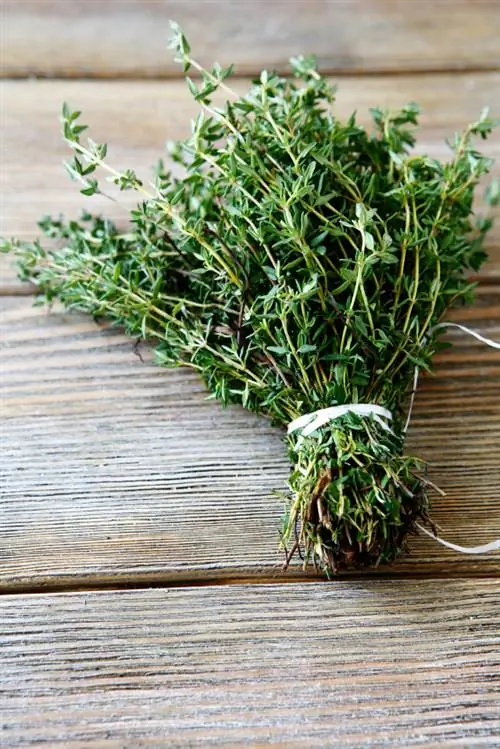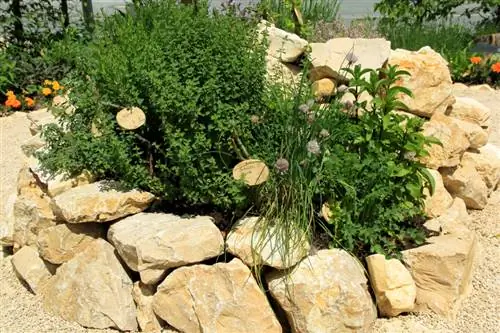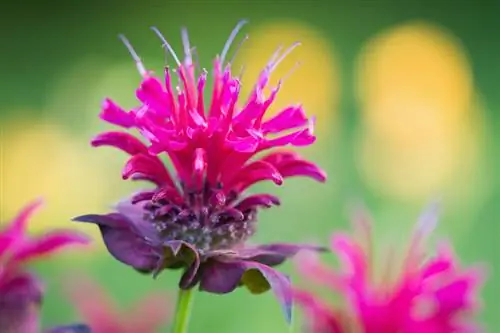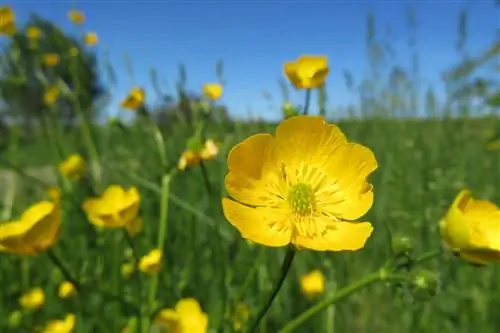- Author admin [email protected].
- Public 2023-12-16 16:46.
- Last modified 2025-01-23 11:22.
Almost everyone knows buttercups from their childhood. People liked to collect these shiny yellow flowers and give them to their mother or make a wreath out of them. But did you know that these plants are also medicinal?
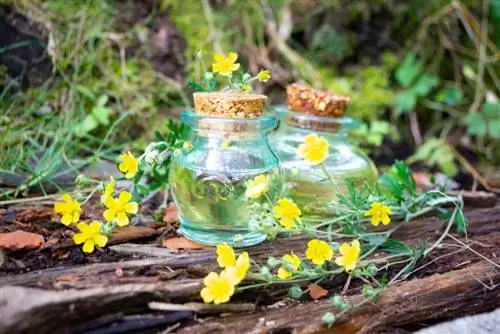
What healing effects does the buttercup have?
The healing effects of buttercup are evident in skin diseases and pain. Dried or heated plant parts can help with warts, chilblains, rheumatism, hip pain, fever, headaches and eye diseases. In homeopathy it helps with ulcers, rashes and other complaints.
How does buttercup affect the human body?
This buttercup plant has an effect on the human bodytoxic. Eating the poisonous buttercup can cause cramps, shortness of breath and paralysis, among other things.
The buttercup can have a visible effect on the human body even externally. Simply walking barefoot across a freshly mown meadow with buttercups can lead to redness and even inflammation on the soles of the feet. In some cases, the plant sap even leads to blistering and itching.
However, the buttercup can also do good things. However, theirhealing effects have long been forgotten.
What happens when the buttercup dries?
If the plant parts of the buttercup are dried or heated, the following happens: Thepoisonous protoanemonin, which is contained in the plant sap,is creatednon-toxic anemone When dried or heated, the buttercup is no longer toxic.
However, the active ingredient called ranunculin starts the conversion. It comes out when the buttercup is injured, such as when the stems are picked. This glucoside is then converted into protoanemonin when it comes into contact with oxygen.
What is buttercup used for in folk medicine?
In folk medicine literature, the leaves and flowers of the buttercup are particularly praised. They serve as a remedy forSkin diseases and pain. This is how the buttercup helps against:
- Warts
- Chilblains
- Rheumatism
- Hip pain
- Fever
- Headache
- Eye diseases
Buttercups are also used as a laxative and hair growth agent. They can be used both externally, for example as a poultice, and internally, among other things, for colds.
How is buttercup used in homeopathy?
In homeopathy, all parts of the plant, including the seeds and flowers of the buttercup, are used. Whether as globules or drops - in a homeopathic dose, buttercup is said to be used forulcers, rashes, warts, shingles, hives, muscle pain, gout, herpesandchickenpox have a supportive effect.
Can a layperson use the buttercup as a medicinal plant?
It isnot advisable for amateurs to collect the buttercup, dry it and then use it as a medicinal plant. The risk of doing something wrong is high. If you are careful, you can dry parts of the plant and brew them in small doses as a tea mixture together with other herbs such as dandelion, horsetail and nettle. You can also grind the dried buttercup into powder and mix it with water for poultices.
Tip
Not all buttercups are the same
The dandelion is also often referred to as buttercup. However, in contrast to the buttercup from the buttercup family, it is non-toxic and less complicated to use medicinally.


